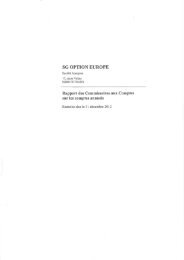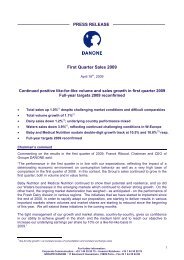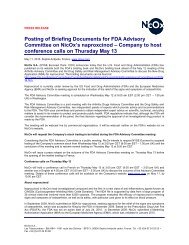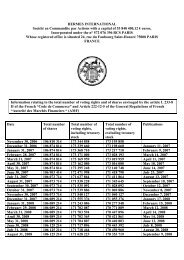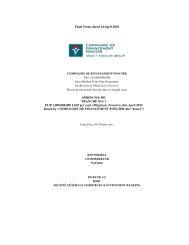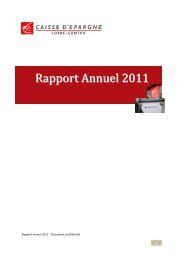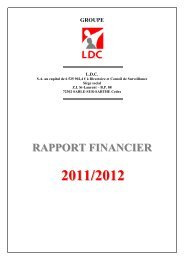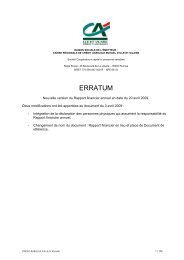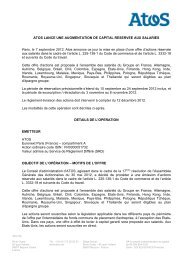Financial Reporting - Rexel
Financial Reporting - Rexel
Financial Reporting - Rexel
Create successful ePaper yourself
Turn your PDF publications into a flip-book with our unique Google optimized e-Paper software.
Effective interest rate<br />
The effective interest rate is the rate that exactly discounts the expected stream of future cash flows through<br />
to maturity to the current net carrying amount of the liability on initial recognition. When calculating the<br />
effective interest rate of a financial liability, future cash flows are determined on the basis of contractual<br />
commitments.<br />
Transaction costs<br />
Transaction costs are incremental costs that are directly attributable to the issue of the credit line. They<br />
include fees and commissions paid to agents and advisers, levies by regulatory agencies and securities<br />
exchanges, and transfer taxes and duties. Transaction costs do not include debt premiums, or allocations of<br />
internal administrative or overhead expenses.<br />
For financial liabilities that are carried at amortized cost, transaction costs are included in the calculation of<br />
amortized cost using the effective interest rate method and, in effect, amortized through the income<br />
statement over the life of the instrument.<br />
Net financial debt<br />
Net financial debt includes interest-bearing borrowings and accrued interest less cash and cash equivalents.<br />
2.14 | Employee benefits<br />
Group companies operate various pension schemes. Some of these schemes are funded by insurance<br />
companies or trustee-administered funds in accordance with local regulation.<br />
Pension and other long-term benefits include two categories of benefit:<br />
• post-employment benefits including pensions, retirement supplements and medical benefits after<br />
retirement,<br />
• other long-term benefits (during employment) mainly including jubilees and long service awards.<br />
These benefits are classified as either:<br />
• defined contribution plans when the employer pays fixed contributions into a separate entity<br />
recognized as an expense in profit and loss and will have no legal or constructive obligation to pay<br />
further contributions, or<br />
• defined benefit plans when the employer guarantees a future level of benefits.<br />
The Group’s net obligation in respect of defined post-employment benefit plans, including pension plans, is<br />
calculated separately for each plan by estimating the amount of future benefit that employees have earned in<br />
return for their service in the current and prior periods. That benefit is discounted to determine its present<br />
value, and the fair value of any plan assets is deducted. The discount rate is the yield at the balance sheet<br />
date on high quality corporate bonds that have maturity dates approximating the terms of the Group’s<br />
obligations. The calculation is performed periodically by an independent actuary using the projected unit<br />
credit method.<br />
The liability recognized in the balance sheet in respect of defined benefit schemes is the present value of the<br />
defined benefit obligation at the balance sheet date less the fair value of plan assets, together with<br />
adjustments for unrecognized actuarial gains and losses and past service costs.<br />
When the benefits of a plan are improved (reduced), the portion of the increased (decreased) benefit relating<br />
to past service by employees is recognized as an expense (income) in the income statement on a straightline<br />
basis over the average period until the benefits become vested. To the extent that the benefits vest<br />
immediately, the expense (income) is recognized immediately in profit or loss.<br />
The Group recognizes actuarial gains and losses (resulting from changes in actuarial assumptions) using the<br />
corridor method. Under the corridor method, to the extent that any cumulative unrecognized actuarial gain or<br />
loss exceeds 10 percent of the greater of the present value of the defined benefit obligation and the fair<br />
value of plan assets, that portion is recognized in profit or loss over the expected average remaining working<br />
lives of the employees participating in the plan. Otherwise, the actuarial gain (loss) is not recognized.<br />
36



